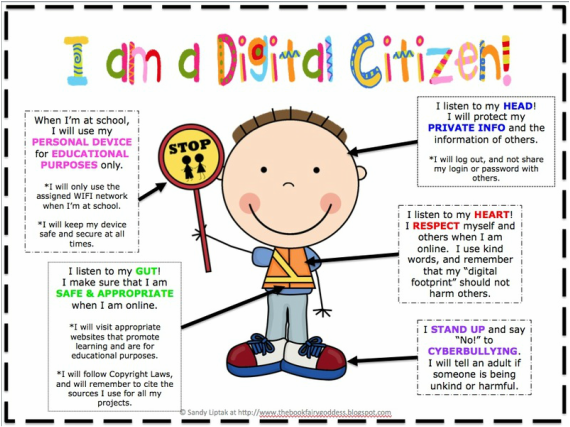
Digital Citizenship |
What is Digital Citizenship?
Digital citizenship is defined as the norms of appropriate, responsible behaviour with regard to technology use. The
key themes of digital citizenship address how to be ethical, safe and
secure in online environments. It is often also classified under 9
specific elements here
What is the context of Digital Citizenship ?
The three key contexts through which Digital Citizenship should be addressed in schools are:
Why do Catholic Schools need to address Digital Citizenship?
With the growth of Bring Your Own Device (BYOD) and 1:1 initiatives
in schools there is a need to talk about appropriate and responsible
use of technology within the context of our faith. Evidence suggests
many students are not provided with support in their use of technology.
There are many organizations and individuals that are working on this
topic. This site attempts to aggregate
appropriate high quality digital citizenship advice and resources for
schools, teachers and parents.
How does the National Safe Schools Framework fit in ?
The
National Safe Schools Framework was ratified by state and territory
Education Ministers in 2010. It was re-ratified in 2013 as a document
that all schools should be addressing
There are 9 elements of the National Safe Schools Framework
1. Leadership commitment to a safe school
2. A supportive and connected school culture
3. Policies and procedures
4. Professional learning
5. Positive behaviour management
6. Engagement, skill development and safe school curriculum
7. A focus on student wellbeing and student ownership
8. Early intervention and targeted support
9. Partnerships with families and community
Nine Themes of Digital Citizenship
1.Digital Etiquette: electronic standards of conduct or procedure.
2.Digital Communication: electronic exchange of information.
3.Digital Literacy: process of teaching and learning about technology and the use of technology.
4.Digital Access: full electronic participation in society.
5.Digital Commerce: electronic buying and selling of goods.
6.Digital Law: electronic responsibility for actions and deeds
7.Digital Rights & Responsibilities: those freedoms extended to everyone in a digital world.
8.Digital Health & Wellness: physical and psychological well-being in a digital technology world.
9.Digital Security (self-protection): electronic precautions to guarantee safety.
A digital footprint
is the data trail left by activity in a digital environment such as
email and social networks on the Internet but also may include Mobile
telephone and other digital devices and sensors. Digital footprints are
invisible electronic representations of memories and opinions, and
provide data on physical and online activities.
Information from the CNA website view @
http://cnadigitalcitizenship.weebly.com/digital-citizenship.html
|